Introduction
Psychedelic-assisted therapy with psilocybin has shown promise in Phase 2 trials for alcohol use disorder (AUD). Set and setting, particularly factors facilitating a connection with nature, may positively influence the psychedelic experience and therapeutic outcomes. But to date, randomized controlled trials of interventions to enhance set and setting for psychedelic-assisted therapy are lacking.
Methods
This was a pilot randomized, controlled trial of Visual Healing, a nature-themed video intervention to optimize set and setting, versus Standard set and setting procedures with two open-label psilocybin 25 mg dosing sessions among 20 participants with AUD. For the first session, participants randomized to Visual Healing viewed nature-themed videos during the preparation session and the “ascent” and “descent” phases of the psilocybin dosing session while participants randomized to the Standard condition completed a meditation during the preparatory session and wore eyeshades and listened to a music playlist throughout the dosing session. For the second session 4 weeks later, participants chose either Visual Healing or Standard procedures. Primary outcomes were feasibility, safety, and tolerability of Visual Healing. Secondary and exploratory outcomes were changes in alcohol use, psychedelic effects, anxiety and stress.
Results
Nineteen of 20 (95%) randomized participants (mean age 49 ± 11 years, 60% female) completed the 14-week study. During the first psilocybin session, participants viewed an average of 37.9 min of the 42-min video and there were no video-related adverse events. Peak increase in post-psilocybin blood pressure was significantly less for participants randomly assigned to Visual Healing compared to Standard procedures. Alcohol use decreased significantly in both Visual Healing and Standard groups and psychedelic effects, stress, and anxiety were similar between groups.
Discussion
In this open-label pilot study, viewing Visual Healing videos during preparation and psilocybin dosing sessions was feasible, safe, and well-tolerated among participants with AUD. Preliminary findings suggest that Visual Healing has potential to reduce the cardiovascular risks of psychedelic therapy, without interfering with the psychedelic experience or alcohol-related treatment outcomes. Studies to replicate our findings as well as studies of different set and setting interventions with other psychedelic medications and indications are warranted.
